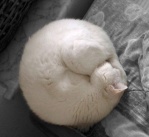meodingu

Posts : 156
Join date : 2010-09-21
 |  Subject: Compatibility Subject: Compatibility  Mon Jan 10, 2011 9:53 pm Mon Jan 10, 2011 9:53 pm | |
| Compatibility eSATAp (eSATA/USB) combo port is compatible with USB devices * The USB standard specifies relatively loose tolerances for compliant USB connectors to minimize physical incompatibilities in connectors from different vendors. To address a weakness present in some other connector standards, the USB specification also defines limits to the size of a connecting device in the area around its plug. This was done to prevent a device from blocking adjacent ports due to the size of the cable strain relief mechanism (usually molding integral with the cable outer insulation) at the connector. Compliant devices must either fit within the size restrictions or support a compliant extension cable which does. * Two-way communication is also possible. In USB 3.0, full-duplex communications are done when using SuperSpeed (USB 3.0) transfer. In previous USB versions (i.e., 1.x or 2.0), all communication is half-duplex and directionally controlled by the host. In general, cables have only plugs (very few have a receptacle on one end, although extension cables with a standard A plug and jack are sold), and hosts and devices have only receptacles. Hosts almost universally have type-A receptacles, and devices one or another type-B variety. Type-A plugs mate only with type-A receptacles, and type-B with type-B; they are deliberately physically incompatible. However, an extension to USB standard specification called USB On-The-Go allows a single port to act as either a host or a device—chosen by which end of the cable plugs into the receptacle on the unit. Even after the cable is hooked up and the units are talking, the two units may "swap" ends under program control. This capability is meant for units such as PDAs in which the USB link might connect to a PC's host port as a device in one instance, yet connect as a host itself to a keyboard and mouse device in another instance. free Logo DesignFlash Page Flip | |
|

